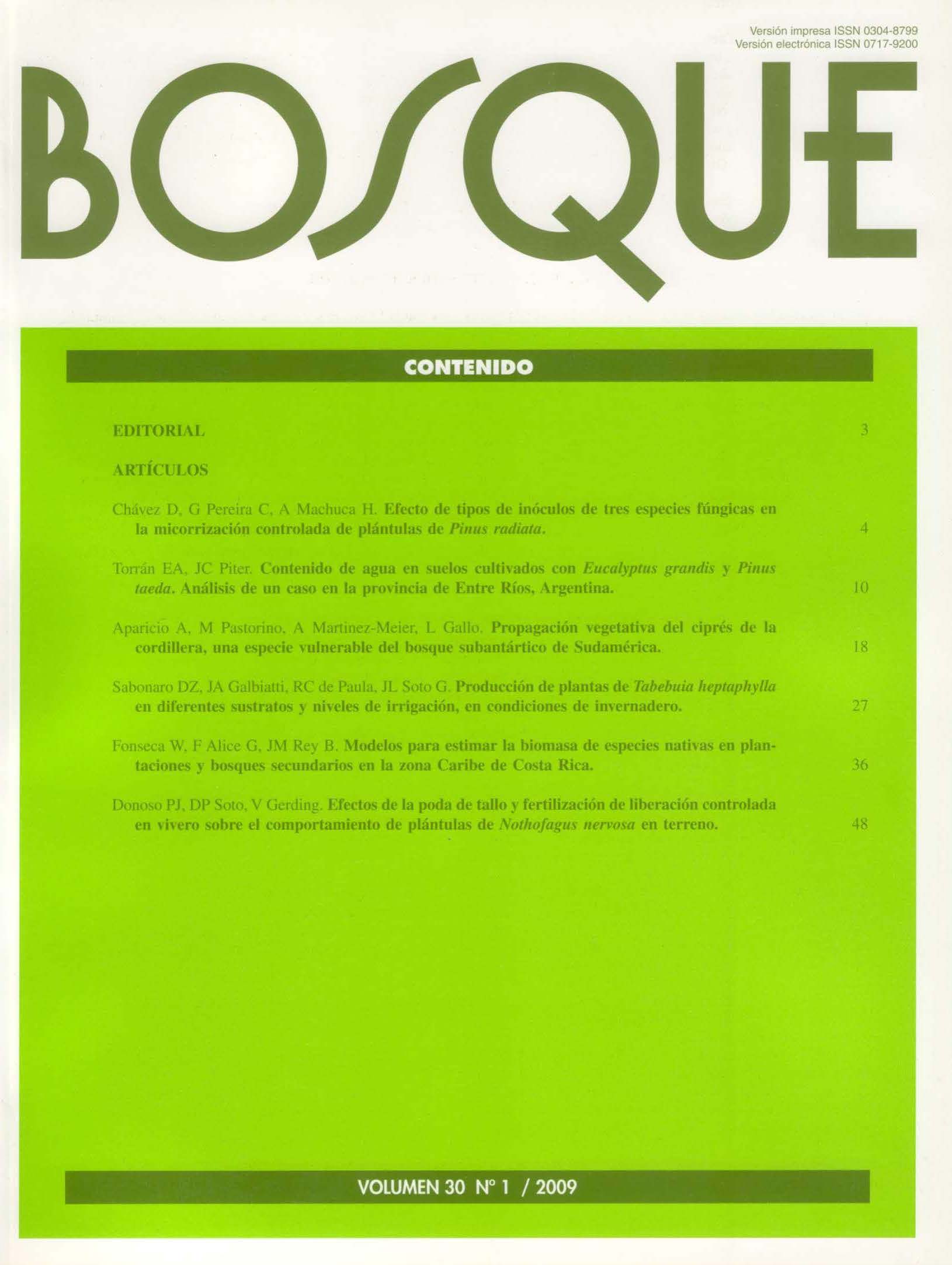Main Article Content
Apr 30, 2009
Abstract
Raulí (Nothofagus nervosa) is a highly valuable and fast growing Chilean native tree species, therefore being of great interest for the establishment of plantations. The success of plantations depends upon several factors, among which nursery management can be decisive. This study evaluated the effects of slow release fertilization (FLC) in doses of 2.5, 5.0 and 7.5 kg m-3, and of topping (with and without) on the survival and growth of raulí in a plantation with restoration purposes in the Valdivian Andes of Chile (650 m asl). Average survival was 82 % the first year, 70 % the second and 62 % the third (mortality due to frosts). The mean height growth for the period was 120 cm. However, the trend was that survival and growth were greater with the two higher fertilization doses, and to a lesser extent with topping. During the first three years of field evaluation we did not detect significant differences of FLC and top pruning on survival, height growth and diameter at breast height among the six treatments. However, the trend was that there were higher survival rates and growth rates with the two higher FLC doses, which also occurred with top pruning (better perforrmance with pruning), but to a lower extent. Results show that with the range of plant quality used, similar performance results can be obtained when outplanted in the field.


